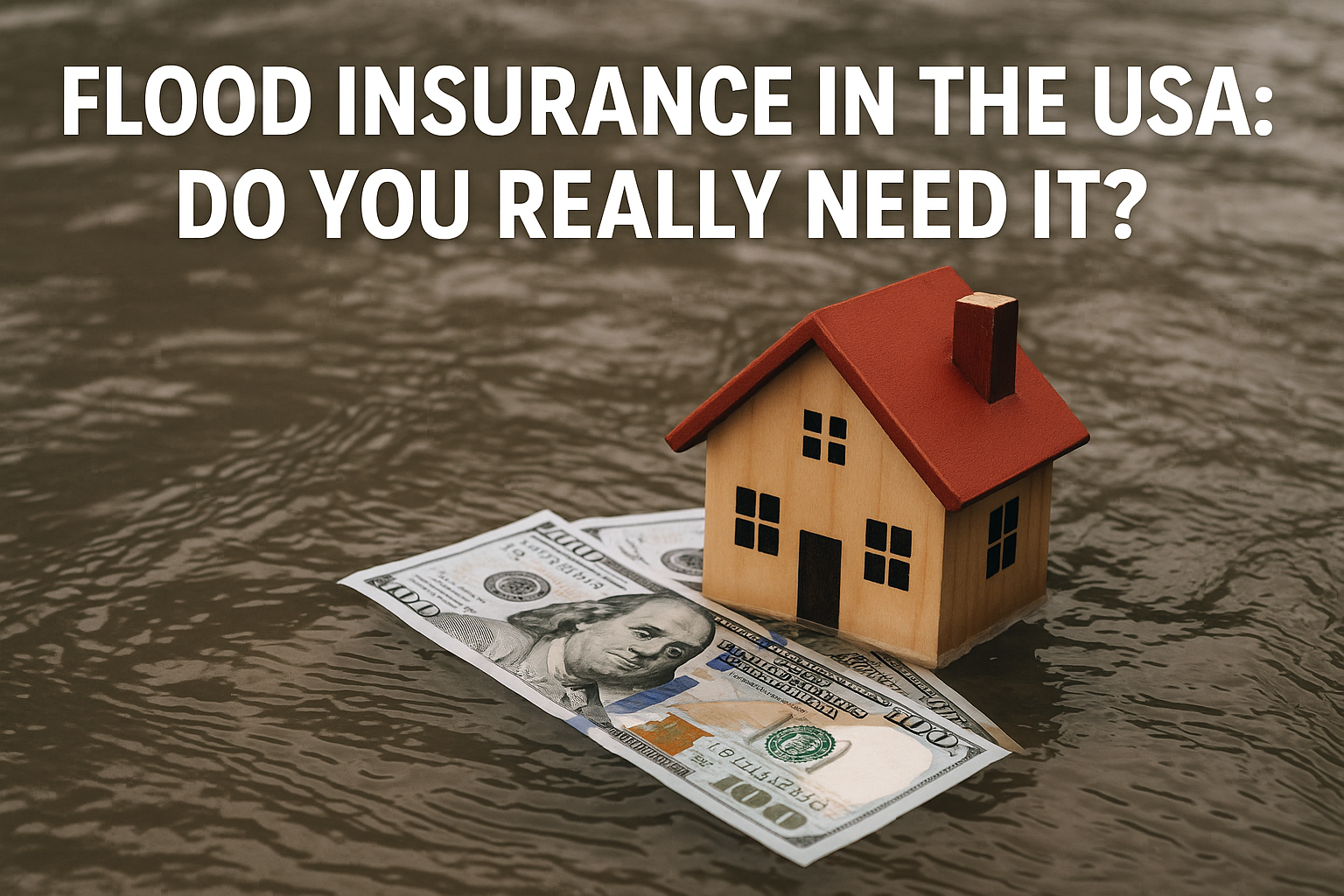Floods are the most common and costly natural disasters in the United States. With extreme weather events on the rise, many Americans wonder: Do I really need flood insurance? Whether you’re a homeowner, renter, or business owner, understanding your flood risk and insurance needs is crucial for financial security.
This article explores the essentials of Flood Insurance in the USA, why it matters in 2025, and how to make informed coverage decisions.
Understanding Flood Insurance in the USA
What is Flood Insurance?
Flood insurance is a special type of coverage that protects your property and belongings from damage caused by flooding. Unlike homeowners insurance, which typically excludes flood-related damages, flood insurance ensures you’re not left footing a massive bill after a disaster.
Difference Between Homeowners Insurance & Flood Insurance
Homeowners Insurance covers events like fires, theft, or wind damage—but NOT floods.
Flood Insurance specifically covers water damage from overflowing rivers, storm surges, heavy rainfall, and more.
Why Flood Insurance is Essential in 2025
Rising Climate Risks & Natural Disasters
Climate change has intensified storms, leading to severe flooding even in areas once considered safe. In 2024 alone, over 40% of flood claims came from low-to-moderate risk zones.
FEMA Flood Zones Explained
High-Risk Zones (Special Flood Hazard Areas – SFHA) require flood insurance for federally backed mortgages.
Moderate-to-Low Risk Zones are not mandated but still prone to flooding.
Who Really Needs Flood Insurance?
Homeowners in High-Risk Flood Areas
If you live near coastal areas, rivers, or in floodplains, flood insurance isn’t just recommended—it’s essential.
Renters & Business Owners
Flood insurance is not limited to homeowners. Renters can insure personal belongings, while businesses can protect assets and avoid devastating losses.
What Does Flood Insurance Cover?
Building Property Coverage
Foundation walls
Electrical and plumbing systems
Central air conditioning equipment
Attached garages
Personal Contents Coverage
Furniture
Electronics
Clothing
Portable appliances
Costs of Flood Insurance in the USA
Average Premiums by State
Flood insurance costs vary, with national averages around $900 annually. However, rates differ by state:
| State | Average Annual Premium |
|---|---|
| Florida | $700 – $1,100 |
| Texas | $800 – $1,200 |
| Louisiana | $900 – $1,400 |
| California | $800 – $1,100 |
Factors Affecting Flood Insurance Rates
Location & flood zone
Elevation & building structure
Coverage limits
Deductibles chosen
How to Buy Flood Insurance in the USA
National Flood Insurance Program (NFIP)
The NFIP, managed by FEMA, is the primary provider of flood insurance policies. Available through participating insurance agents, it offers standard coverage limits.
Private Flood Insurance Options
Private insurers may offer higher coverage limits and broader protections, sometimes at competitive prices.
Common Myths About Flood Insurance
“I Don’t Live in a Flood Zone, So I Don’t Need It”
Fact: 25% of flood insurance claims come from low-risk zones.
“Federal Disaster Aid Will Cover Me”
Disaster aid often comes in the form of loans that must be repaid. Insurance provides faster, more reliable protection.
How to Determine Your Flood Risk
Using FEMA Maps & Tools
Visit FEMA’s Flood Map Service Center to check your property’s flood zone.
Professional Flood Risk Assessment
For a detailed evaluation, consider hiring a licensed floodplain manager or surveyor.
Flood Insurance Claim Process Explained
Filing a Flood Insurance Claim
Contact your insurance agent immediately.
Document damages with photos/videos.
Submit a Proof of Loss within 60 days.
What to Expect During the Process
An adjuster will inspect your property and estimate repair costs. Payouts typically arrive within 30-60 days after claim approval.
Tips to Reduce Flood Insurance Costs
Elevating Your Home
Raising your property above base flood elevation can significantly lower premiums.
Floodproofing Measures & Discounts
Installing flood vents
Sealing basements
Participating in community flood mitigation programs
Impact of Climate Change on Flood Insurance Rates
Increasing Flood Events
The rise in severe storms has led insurers to reassess risk levels, resulting in higher premiums and policy adjustments.
Premium Adjustments & Reforms
Programs like FEMA’s Risk Rating 2.0 aim to make premiums more equitable based on individual property risks.
Flood Insurance vs. Disaster Assistance
How They Differ
Flood Insurance: Guaranteed payouts for covered damages.
Disaster Assistance: Limited, often loan-based, and dependent on federal declarations.
Why Insurance is More Reliable
Flood insurance offers financial certainty, unlike unpredictable disaster aid.
Benefits of Having Flood Insurance
Financial Security against unexpected disasters.
Peace of Mind knowing your home and belongings are protected.
Compliance with mortgage lender requirements in high-risk zones.
Government Initiatives & Support for Flood Insurance
NFIP Updates
Recent reforms focus on simplifying claims and enhancing coverage transparency.
Community Rating System (CRS)
Communities engaging in flood mitigation efforts may qualify for premium discounts.
Frequently Asked Questions (FAQs)
1. Is flood insurance mandatory in the USA?
Only for homes in high-risk flood zones with federally backed mortgages.
2. Can renters buy flood insurance?
Yes, renters can purchase policies to protect their personal belongings.
3. Does homeowners insurance cover floods?
No, you need a separate flood insurance policy for flood-related damages.
4. How much does flood insurance typically cost?
On average, premiums range from $700 to $1,400 annually, depending on location and property factors.
5. Can I get flood insurance if I’m not in a flood zone?
Yes, flood insurance is available to anyone, and often at lower rates in low-risk zones.
6. What is covered under flood insurance?
Flood insurance typically covers building structures and personal contents damaged by flooding.
Final Thoughts: Is Flood Insurance Worth It?
In 2025, as climate risks grow, flood insurance in the USA becomes increasingly vital. Even if you live outside high-risk zones, having coverage can protect you from financial ruin. Remember, it’s better to be safe than sorry when nature strikes.
